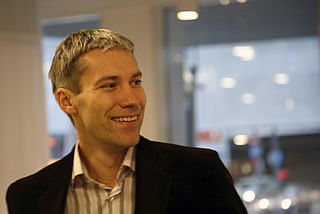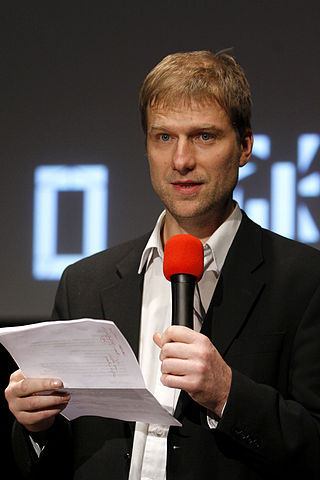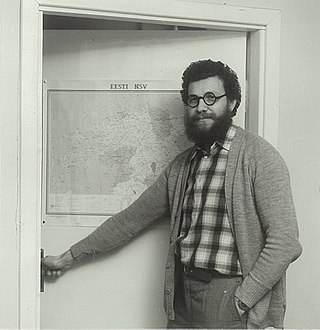
The Estonia men's national football team represents Estonia in international football matches and is controlled by the Estonian Football Association, the governing body for football in Estonia. Estonia's home ground is Lilleküla Stadium in the capital city Tallinn.
Raine Karp is an Estonian architect.
Andres Alver is an Estonian architect.

Leonhard Lapin, also known under the pseudonym Albert Trapeež, was an Estonian architect, artist, architecture historian, and poet.

Maarjamäe is a subdistrict in the district of Pirita, Tallinn, the capital of Estonia. It is bordered by Pirita and Kose to the north, Lasnamäe to the south, Kadriorg to the southwest and the Bay of Tallinn to the west. As of 2022, it has a population of 2,412.

Indrek Allmann is an Estonian architect and city planner.
Hanno Grossschmidt is an Estonian architect.
Katrin Koov is an Estonian architect.
Tõnu Laigu is an Estonian architect.
Marika Lõoke is an Estonian architect.

Ülar Mark is an Estonian architect.
Urmas Muru is an Estonian architect and artist.

Peeter Pere is a notable Estonian architect and artist.
Andres Põime is an Estonian architect.
Andres Siim is an Estonian architect. dead in 2020
Emil Urbel is an Estonian architect.
Anton Lembit Soans was an Estonian architect, urban planner and lecturer. He was one of the founding members of the Estonian Architects Union.

Tiit Kaljundi was an Estonian architect and a member of the Tallinn School. He became well known in the later part of the 1970s as a part of a new movement of Estonian architects that was led by Leonhard Lapin and Vilen Künnapu. The majority of the architects in this movement were graduates from the State Art Institute in the early 1970s. This group included Kaljundi, Avo-Himm Looveer, Ain Padrik, Jüri Okas, and Ignar Fjuk, as well as Veljo Kaasik and Toomas Rein from an older generation of architects. After the 1983 exhibition in the Tallinn Art Salon, they became known as the “Tallinn Ten" or the "Tallinn School," a broader term to describe the group used by the Finnish architect Markku Komonen.
Vello (Ergav-Vello) Asi was an Estonian interior architect, graphic designer and professor at the Estonian Academy of Arts. Together with Väino Tamm, he has been one of the most important interior architects and representer of modernist interiors in Estonia since the late 1950s.
This page summarizes Estonian football in 2021. It contains information about the league system, national teams, beach football and futsal.






